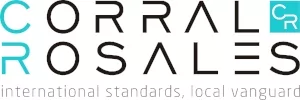The Court of Justice of the Andean Community, a supranational body with competence to ensure compliance with Andean regulations, their uniform application and interpretation in the member countries, in the exercise of its power to interpret Decision 486 of the Andean Community, has repeatedly defined the figure of a renowned trademark or also known as highly renowned. Thus, it has expressly said that: "The notorious trademark regulated in Decision 486, which we can call an Andean notorious trademark, is that which is notorious in any member country of the Andean Community (...). The renowned trademark, for its part, is not regulated in Decision 486, but due to its nature, it receives special protection in all four member countries. "1 Departing from the interpretation of the Andean Court, the National Service of Intellectual Rights (SENADI), in an appeal resolution, expressly ignored the existence of this figure, arguing that it is not specifically provided for in the Andean regulations.
The renowned trademark, whose special protection has been repeatedly recognized by the Court of Justice of the Andean Community, presupposes its knowledge by not only the specific consumers of the product or service in question, but that this level of knowledge is extended to the general public, even to those who do not consume the products or services protected by the trademark. The special protection on this type of trademarks seeks to prevent third parties' illicit use of the prestige they possess.
An example of the special protection that the Andean regime grants to highly renowned trademarks is shown in the evidentiary field. Thus, it has been expressly established through numerous preliminary rulings that the renowned trademark does not need to be proven, since it is comparable to what is commonly known as a well-known fact.
Although this special protection is not expressly regulated in Decision 486 of the Andean Community or in the Organic Code of the Social Economy of Knowledge, Creativity and Innovation, as it has been expressly recognized by the Court of Justice of the Andean Community, through preliminary rulings, it forms an integral part of the Andean community law, to which Ecuador is subject to.
In the case at hand, a person applied for the registration of the trademark PIZZAS DEL VALLE2, to protect the services of bars, cafes, restaurants, catering (international class 43 services). Against this request, a third party, owner of the DEL VALLE trademark, filed an opposition based on the similarities between the signs and the renowned nature of its trademark. In first instance, SENADI just focused on comparing products and services, and concluded that the trademark applied for was registrable. There was no pronouncement on the highly renowned name argued by the opponent.
The opponent filed an appeal in which, among other arguments, he insisted on the absence of a pronouncement on the argument of the highly renowned trademark. On this issue, SENADI pointed out: "As for the appellant's allegation regarding the highly renowned DEL VALLE trademarks, Community legislation does not recognize the existence of this figure, but only that of notoriety (...)"3 Within the same decision, it also pointed out that: "this Court denotes the fact that once the file has been reviewed, it has not been verified that the holder has provided sufficient material to verify the veracity of his statements in accordance with the factors stipulated in the regulations, having only limited itself to pointing out that said trademarks are easily recognized by the general consumer. "
The aforementioned Resolution is contrary to the Andean regulations and specifically to the binding preliminary rulings of the Court of Justice of the Andean Community regarding the protection of trademarks in the member countries.
This type of decision confirms the need for the intellectual property offices of the member countries to implement permanent updating programs on the development of Andean community law. This would not only avoid damage to users due to an erroneous interpretation of the regulations and lack of application of binding rulings, but it would also raise the level of the decisions issued, so that, in addition to solving a conflict, they become a source of reference, for lawyers and users on intellectual property issues.
Footnotes
1 Preliminary ruling 07-IP-2020 of May 8, 2020.
2 Procedure SENADI-2018-61769 of August 29, 2018.
3 Resolution No. OCDI-2020-1042 of December 23, 2020.
The content of this article is intended to provide a general guide to the subject matter. Specialist advice should be sought about your specific circumstances.


